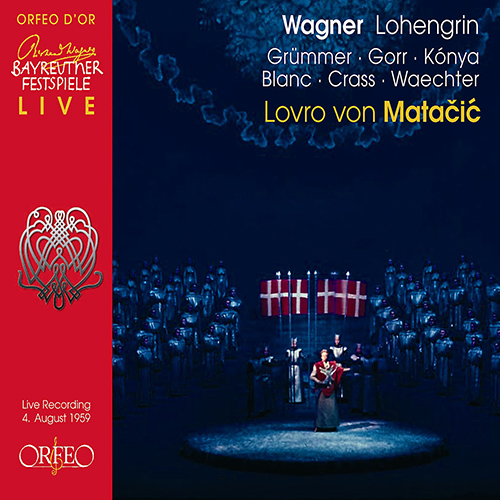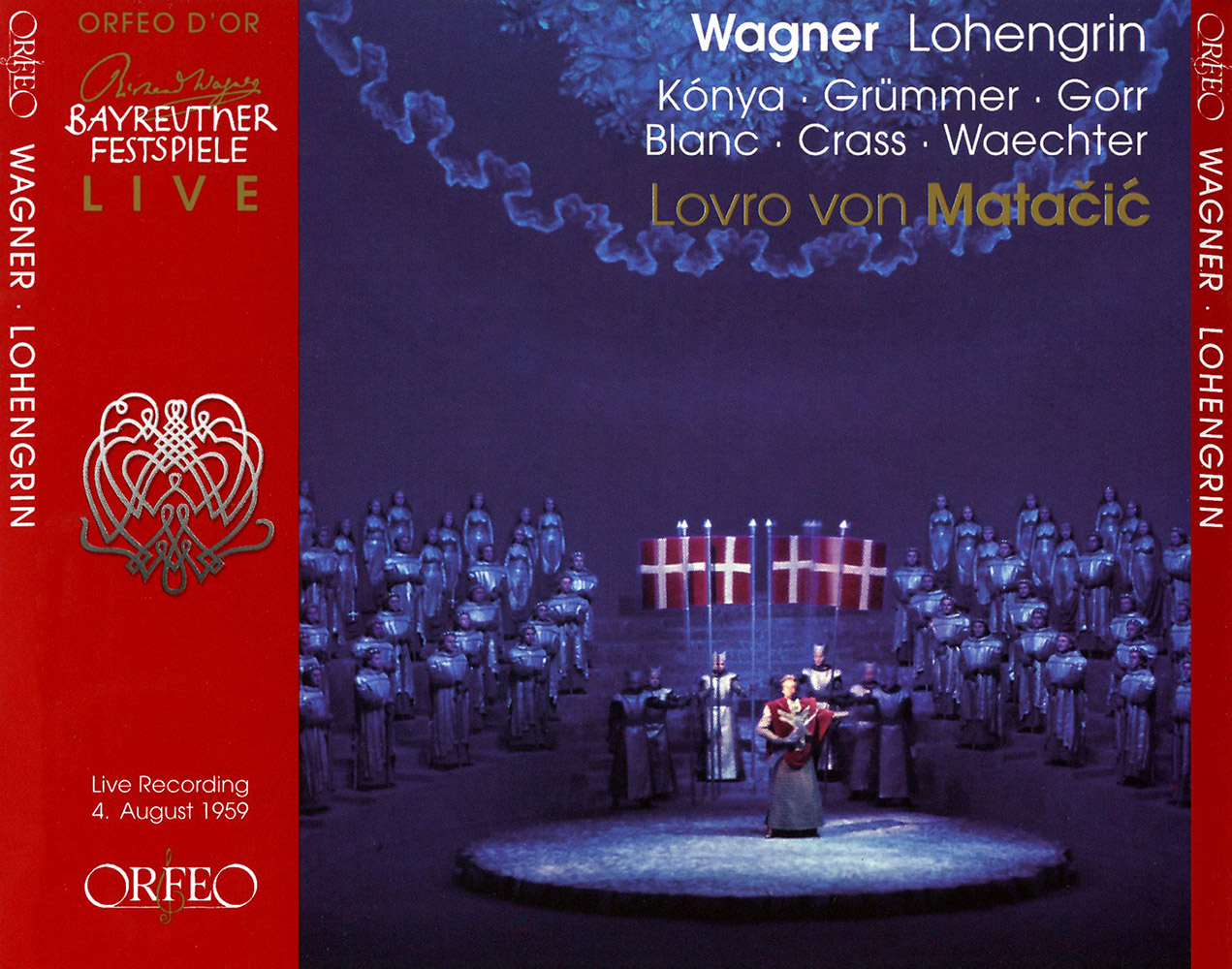Wagner: Lohengrin
The success of any performance of Lohengrin depends in no small way on the protagonist’s ability to combine heroic radiance with the cultivated tone associated with the bel canto repertory. In this regard the Hungarian tenor
Sándor Kónya has always been regarded by cognoscenti as unsurpassable, such was his matchless ability to combine nobility of timbre, radiant top notes, simple elegance in his phrasing and the subtlest dynamic shadings. The fact that he was also the Swan Knight of one’s dreams in terms of his appearance and acting is unfortunately something we can now tell only from photographs of Wieland Wagner’s production, which was first seen at Bayreuth in 1958. A live recording of the 1959 revival is now available on the Orfeo label. In addition to this feast for the ears, the accompanying booklet follows the model adopted by our earlier Bayreuth releases and includes an introductory essay by the festival’s press officer, Peter Emmerich, as well as numerous illustrations documenting the visual delights of the production.
Kónya’s partners are no less outstanding: in Elisabeth Grümmer (Elsa) and Franz Crass (King Henry) we have two more interpreters able to marry clear diction with a beautiful singing tone, an ability that was later to be increasingly lost. The demonic couple of Ortrud and Telramund is taken by Rita Gorr and Ernest Blanc, who provide the most striking imaginable contrast with the radiant Elsa and Lohengrin. Neither of them specialized in character roles in the heavy German tradition but had learnt to produce dark tone colours on the basis of the naturally covered vowels typical of the French school of singing. As the Herald, the young Eberhard Waechter was luxury casting, while particular pleasure in this choral opera par excellence is afforded by the Bayreuth Festival Chorus under its legendary chorus master Wilhelm Pitz. Making his Bayreuth Festival début was the conductor Lovro von Matacic, who that same year also appeared for the first time at both La Scala, Milan, and the Vienna State Opera. He went on to conduct dozens of other successful performances, chiefly of the Italian repertory. His Lohengrin is correspondingly notable for its effervescent brio and italianità. The result is a reading of remarkable unity, a performance once much sought after by record collectors and now finally officially available in the optimal sound quality that typifies all Orfeo releases in its Festspieldokumente series.

















